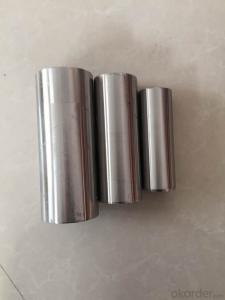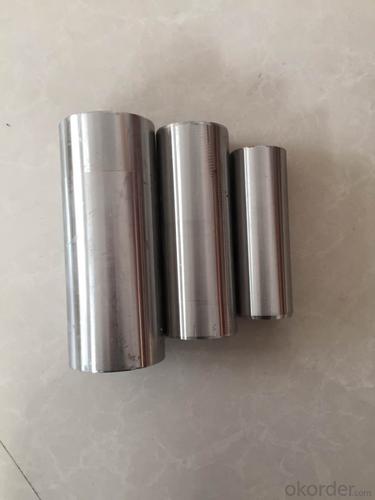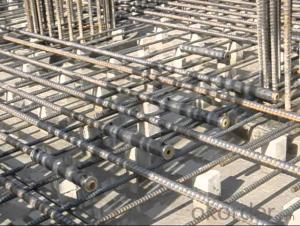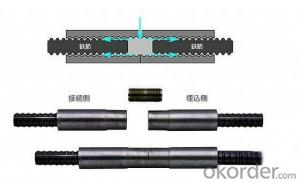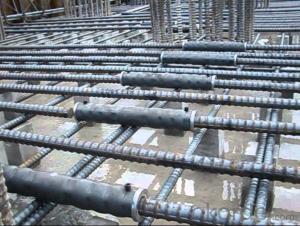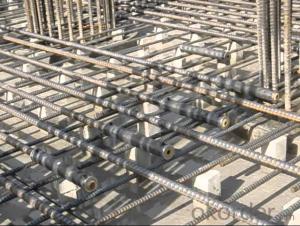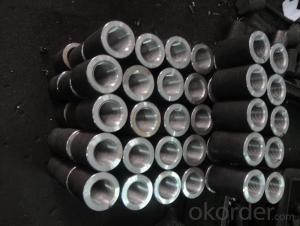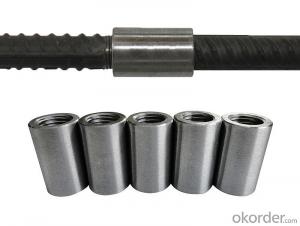Steel Coupler Rebar Aluminum Stair Scaffolding Scaffolding In Riyadh with Great Price
- Loading Port:
- Shanghai
- Payment Terms:
- TT OR LC
- Min Order Qty:
- 1000 pc
- Supply Capability:
- 10000000 pc/month
OKorder Service Pledge
OKorder Financial Service
You Might Also Like
Steel Coupler Rebar Aluminum Stair Scaffolding Scaffolding In Riyadh with Great Price
1.Description:
Lapped joints are not always an appropriate means of connecting rebar. The use of Steel Rebar Couplers can simplify the design and construction of reinforced concrete and reduce the amount of reinforcement required.
The threaded steel coupler system is designed as a threaded reinforcement connection with 100% load transmission. The steel coupler rebar connection system is suitable for both static and dynamic load transmission in construction joints.
The coupler is designed as a threaded reinforcement connection for formed construction joints. Reinforcement work is normally carried out on both sides of the construction joint using lap joints or one side is anchored. The bar lengths are based on the structural analysis requirements of the building component and are calculated from anchorage and lap lengths.
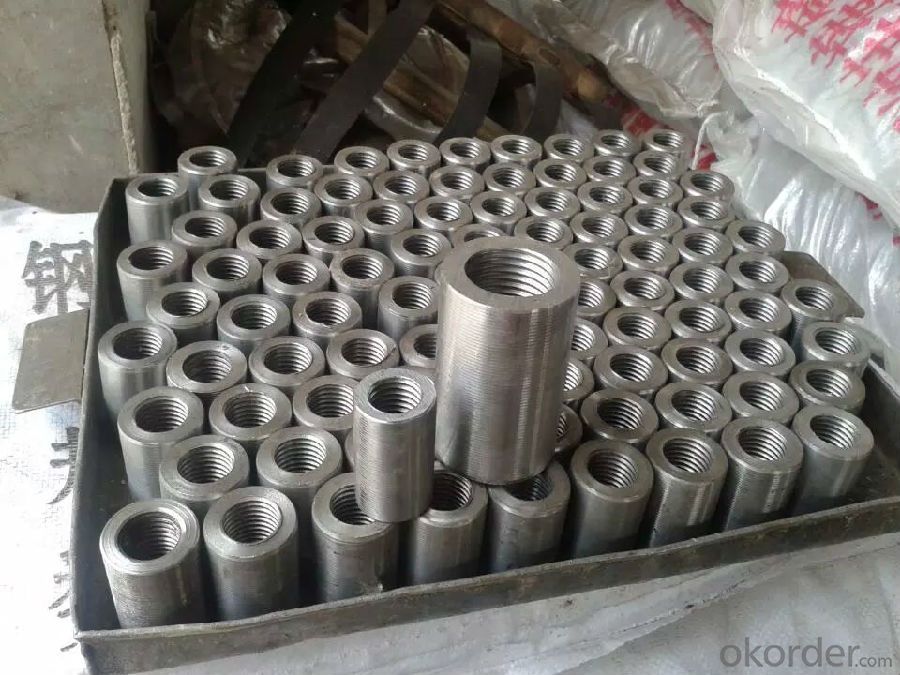
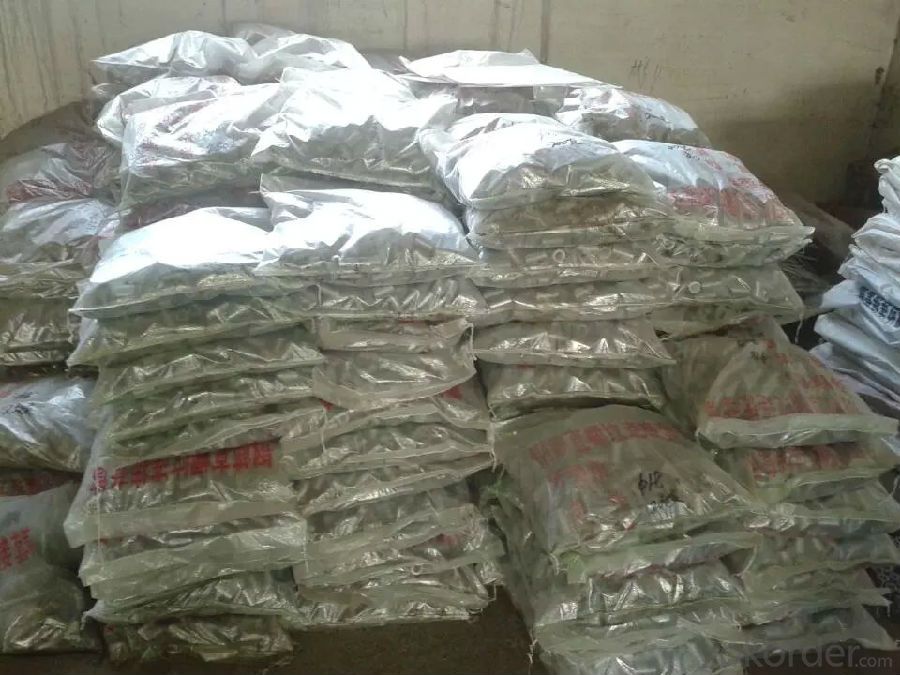
2.Advantages of Steel Coupler Rebar Lift Scaffolding Galvanized Scaffolding Tube with Low Price:
The coupler system provides the opportunity to connect rebars quickly, easily and cost effectively, even when large rebar diameters are used. This makes the steel coupler rebar range a logical extension to our rebendable CNBM reinforcement continuity system for rebars over 12 mm.
3.Available sizes of Steel Coupler Rebar Lift Scaffolding Galvanized Scaffolding Tube with Low Price:
14mm,16mm,18mm,20mm,22mmm,25mm,28mm,32mm,36mm,40mm
4.Delivery:
Delivery Term: FOB / CFR / CIF available.
Delivery Time: 15 days or less after order confirmed.
5.Why choose us?
Technical Expertise
Experienced Management
Stringent Quality Control
Exemplary Service
On-Time Delivery
Wide Product Range
Competitive Pricing
Huge branch network capable of catering worldwide
- Q: Can steel formwork be used for both interior and exterior structures?
- Steel formwork is an option for both interior and exterior structures. This material is versatile and durable, capable of enduring diverse weather conditions. It is suitable for both indoor and outdoor environments, providing exceptional strength and stability. Thus, it is ideal for constructing walls, columns, slabs, and beams. Moreover, steel formwork is reusable, which adds to its cost-effectiveness and environmental friendliness. Whether the construction is for interiors or exteriors, steel formwork guarantees a dependable and efficient solution.
- Q: How does steel formwork affect the quality of concrete?
- Steel formwork can greatly affect the quality of concrete by providing a stable and precise mold for the concrete to be poured into. The use of steel formwork helps ensure uniformity in shape, size, and surface finish of the concrete, resulting in a higher quality and more consistent end product. The strength and durability of steel formwork also enable it to withstand the pressure exerted by the wet concrete, preventing any deformation or leakage that could compromise the integrity of the concrete structure.
- Q: How does steel formwork handle concrete shrinkage cracking?
- Steel formwork handles concrete shrinkage cracking by providing a rigid structure that supports the concrete during the curing process. The steel formwork holds the concrete in place, preventing excessive movement and reducing the risk of shrinkage cracking. Additionally, the steel formwork helps to evenly distribute the forces generated during concrete shrinkage, minimizing the potential for cracking.
- Q: Can steel formwork be used in retail or commercial construction projects?
- Retail or commercial construction projects can benefit greatly from the use of steel formwork. This versatile and durable solution is ideal for creating concrete structures, offering numerous advantages. With its high reusability, excellent dimensional stability, and ability to handle high concrete pressures, steel formwork is a reliable choice. In these types of projects, steel formwork can be utilized for various applications including columns, walls, beams, slabs, and staircases. It provides a strong framework, ensuring accurate and smooth concrete placement, resulting in top-notch finishes. Moreover, steel formwork can be easily customized and adjusted to meet different project requirements, making it suitable for complex architectural designs. In addition to its flexibility, steel formwork also brings significant time and cost savings to construction projects. Its reusability minimizes the need for frequent formwork replacements, leading to reduced material and labor costs. The use of steel formwork further enhances construction efficiency by allowing for quick assembly, disassembly, and repositioning of formwork components. Overall, steel formwork is a dependable and efficient choice for retail or commercial construction projects, providing the necessary strength and flexibility for such applications.
- Q: What are the different types of coatings applied to steel formwork panels?
- There are several types of coatings that can be applied to steel formwork panels, including epoxy-based coatings, polyurethane coatings, zinc-rich coatings, and galvanized coatings. Each type of coating offers different levels of protection against corrosion, weathering, and chemical exposure, ensuring the durability and longevity of the steel formwork panels.
- Q: What are the safety considerations when working with steel formwork?
- When working with steel formwork, there are several safety considerations that should be taken into account to ensure the well-being of workers and the overall success of the project. First and foremost, it is important to provide proper training to all workers who will be involved in handling and installing steel formwork. This training should include instruction on how to safely handle heavy steel panels, as well as how to correctly assemble and dismantle the formwork system. Workers should also be educated on the potential hazards associated with steel formwork, such as the risk of falling objects or pinch points between panels, and how to mitigate these risks. Another important safety consideration is the use of appropriate personal protective equipment (PPE). Workers should be provided with and required to wear PPE such as hard hats, safety glasses, steel-toed boots, and gloves to protect themselves from potential hazards. It is also crucial to ensure that the PPE is in good condition and properly fitted to each worker. Proper planning and organization are key to maintaining safety on a steel formwork site. This includes conducting thorough risk assessments before starting any work, identifying potential hazards, and implementing control measures to minimize risks. It is important to establish designated walkways and clear access routes to prevent tripping hazards and ensure safe movement around the site. Regular inspections of the steel formwork system should be conducted to identify any signs of damage or deterioration. Any damaged or defective components should be promptly repaired or replaced to maintain the structural integrity and safety of the formwork. Lastly, communication and coordination among workers are essential for a safe working environment. Clear communication channels and procedures should be established to ensure that everyone is aware of potential hazards and can promptly report any safety concerns. By prioritizing training, providing proper PPE, planning and organizing the work site, conducting regular inspections, and promoting effective communication, the safety considerations when working with steel formwork can be effectively addressed, reducing the risk of accidents and injuries.
- Q: Can steel formwork be used for school construction projects?
- Indeed, school construction projects can make use of steel formwork. Steel formwork, being a resilient and versatile construction material, is capable of withstanding the immense loads and pressures encountered within school buildings. It provides a robust and steadfast framework for pouring concrete, thus ensuring the structural integrity of the construction. Furthermore, steel formwork is designed to be reusable, thereby offering a cost-effective option for school construction projects. Its adaptability allows for the creation of various shapes and sizes, catering to the distinct architectural designs typically found in school buildings. Moreover, steel formwork facilitates faster construction times when compared to traditional timber formwork, enabling the swift completion of school projects. In summary, steel formwork represents a fitting and dependable choice for school construction projects.
- Q: What is the lifespan of steel formwork compared to other types of formwork?
- The lifespan of steel formwork is generally longer compared to other types of formwork. Steel is a highly durable material that can withstand frequent use and harsh construction conditions. It has excellent resistance to wear, corrosion, and impact, making it a preferred choice for long-term projects. Additionally, steel formwork can be easily repaired and reused, further extending its lifespan.
- Q: How does steel formwork affect the overall weight of the structure?
- Steel formwork can have a significant impact on the overall weight of a structure. Compared to traditional timber formwork, steel formwork is generally heavier due to the inherent properties of steel. Steel is denser and heavier than wood, which means that steel formwork will contribute more to the overall weight of the structure. However, the weight of the steel formwork can also be advantageous in certain situations. The increased weight of steel formwork can provide stability and rigidity to the structure during the construction process, ensuring that the concrete is properly supported and shaped. This can lead to a more precise and durable final structure. Moreover, steel formwork is typically more durable and can be reused multiple times, whereas timber formwork often needs to be replaced after a few uses. This can result in a reduced environmental impact and cost savings in the long run, even though steel formwork may initially add more weight to the structure. Ultimately, the effect of steel formwork on the overall weight of a structure depends on various factors such as the size and complexity of the project, the specific design requirements, and the construction method chosen. However, it is important to consider the trade-offs between the weight of the formwork and its benefits in terms of stability, durability, and cost-effectiveness.
- Q: What are the different types of steel formwork?
- Construction projects utilize various forms of steel formwork. These encompass: 1. Conventional steel formwork: Comprised of steel plates and angles, this formwork is commonly employed for straightforward structures or cases where reusability is necessary. It boasts durability and the ability to bear heavy loads, but its setup and dismantling processes can be time-consuming. 2. Modular steel formwork: This system entails preconstructed modules that can be easily assembled and disassembled on-site. Its versatility allows for use in a wide array of structures, such as walls, columns, and slabs. Featuring a lightweight design, modular steel formwork reduces labor costs and construction time. 3. Tunnel formwork: Specifically devised for tunnel construction, this formwork incorporates steel panels that are bolted together to create a continuous system. Tunnel formwork facilitates rapid construction, making it ideal for extensive projects like subway tunnels or underground structures. 4. Slip formwork: This technique utilizes a continuous concrete pour to craft vertical structures like towers or chimneys. Steel formwork establishes the initial mold, which is progressively moved upward as the concrete is poured. Slip formwork enables swift construction and is commonly employed for high-rise buildings or structures with a consistent cross-section. 5. Climbing formwork: Employed in the construction of tall vertical structures like skyscrapers or bridge piers, this formwork system attaches steel formwork to the structure and then hydraulically lifts or climbs it as the construction progresses. Climbing formwork facilitates continuous construction, eliminating the need for external scaffolding. Each variant of steel formwork presents its own merits and drawbacks. The selection ultimately hinges on project-specific requirements, encompassing considerations such as budget, construction time, and complexity.
Send your message to us
Steel Coupler Rebar Aluminum Stair Scaffolding Scaffolding In Riyadh with Great Price
- Loading Port:
- Shanghai
- Payment Terms:
- TT OR LC
- Min Order Qty:
- 1000 pc
- Supply Capability:
- 10000000 pc/month
OKorder Service Pledge
OKorder Financial Service
Similar products
Hot products
Hot Searches
